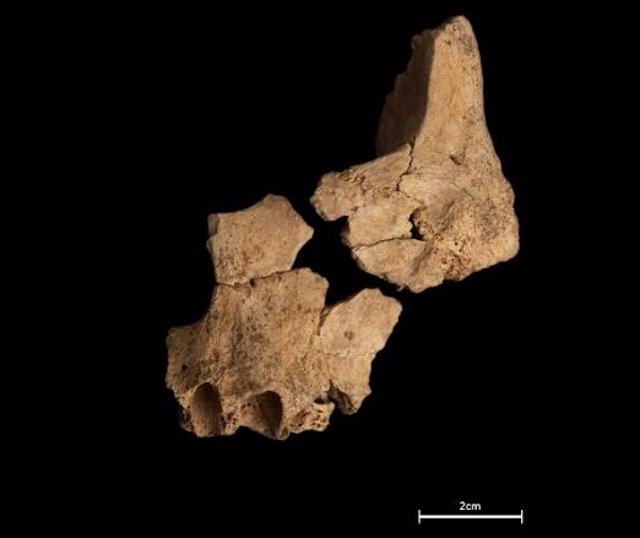July 8. () –
Remains of a partial face of a human being, whose age may be around 1.4 million years, have been excavated at the Atapuerca site in Burgos.
The remains found in the so-called Elephant Chasm They will allow us to understand the origin of the modern face, according to Rosa Huguet, a researcher at the Catalan Institute of Human Paleoecology and Social Evolution (IPHES-CERCA), and coordinator of the Sima del Elefante site.
The discovery took place on June 30, when a series of clay-covered bone remains were recovered. After cleaning them and being analyzed by several specialists, it was determined that these remains corresponded to a human maxilla..
This human fossil from the Sima del Elefante has been recovered approximately two meters below the human jawbone recovered in 2007 which was assigned as Homo sp. –Undetermined species due to lack of conclusive data–. It is very likely that this new fossil from the Sima del Elefante corresponds to an individual that could have been part of the same biological population as the individual in the mandible. If so, it would be part of one of the first populations to colonize Europe and would contribute to finally determining the identity of the human species of the Sima del Elefante.
For a couple of decades, and thanks to the findings at level TD6 of the Gran Dolina depositanother of those distributed in Atapuerca, members of the scientific community discuss the most coherent evolutionary model to explain the origin of the modern face.
Homo antecessor, described for the first time in 1994 and with an age of about 850,000 years, presents the oldest modern face so far in the history of humanity. But, when did a look like ours come about? Now, thanks to the new discovery in Atapuerca, it is hoped that we will have a unique opportunity to advance in the answer to this question: it will be possible to make a detailed comparison between the new face found in the Sima del Elefante with that of Homo antecessor and delve into the origin of the species described 25 years ago by the Atapuerca Research Team.
As a whole, the new findings signify, therefore, a very important step in the research being carried out in Atapuerca and a very important advance in the investigation to discover its antiquity, the nature and the protagonists of the first human occupations in Europe, according to a statement from IPHES.
684255.1.260.149.20220708141812






![[Img #74683]](https://thelatestnews.world/wp-content/uploads/2024/12/The-main-mistakes-to-avoid-when-betting-on-electronic-sports-150x150.jpg)







![[Img #74683]](https://thelatestnews.world/wp-content/uploads/2024/12/The-main-mistakes-to-avoid-when-betting-on-electronic-sports-300x200.jpg)


Add Comment